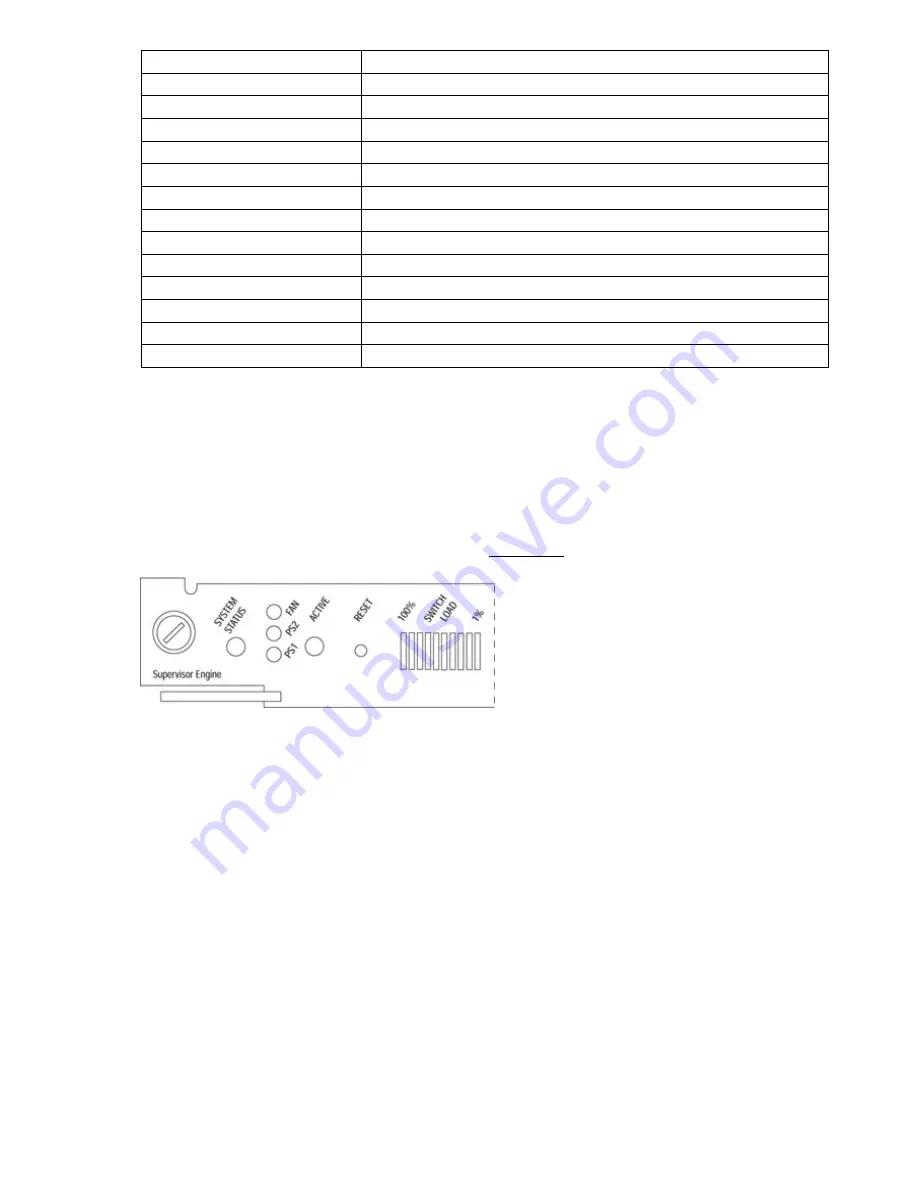
Port Number LED
Test
1
Ports (loopback)
2
Ethernet address PROM
3
CAM (MAC address) table
4
RS−232 console port
5
Realtime clock
6
CAM memory (SRAM)
7
Timer interrupt
8
Port control status
9
Flag memory (DRAM)
10
Buffer memory (DRAM)
11
Forwarding engine memory (SRAM)
12
Forwarding engine CPU
16/26
ECU memory (DRAM)
Tip If the light turns green, the test has been passed. The switch will not boot if all the tests are not passed,
with the exception of the realtime clock test. You can enter the Diagnostic Console on a 1900/2820 series
switch to activate debugging or firmware upgrade options.
Indicator Lights
Indicator lights can be your biggest signal that a hardware, software, or configuration issue exists. In addition
to the Catalyst 1900/2820 series switch LED tests, which were discussed in the last section, the Supervisor
Engine on the Catalyst 5000 and 6000 family has five LEDs that can indicate a problem or tell you current
utilization of the switch. The Supervisor Engine LEDs indicate the system, fan, power supplies, the load
utilization, and whether the Supervisor Engine is active. Figure 16.1 shows the LEDs.
Figure 16.1: The Supervisor Engine LEDs.
The switch load bar indicates the load on the switch. If the local device load is over 80 percent, then either
there is a network problem such as a broadcast storm, or you need to upgrade the switching devices.
The system status lights indicate the following:
Red—The diagnostics on the switch have failed.
•
Orange—The PS2 power supply has failed.
•
Green—All diagnostics have passed.
•
The fan LED indicates the following:
Red—The fan has failed to power up.
•
Green—The fan is operating correctly.
•
The PS1 and PS2 LEDs indicate the following:
Red—The power supply has failed.
•
Green—The power supply is operating normally.
•
Off—The power supply bay is empty or off.
•
310
















































